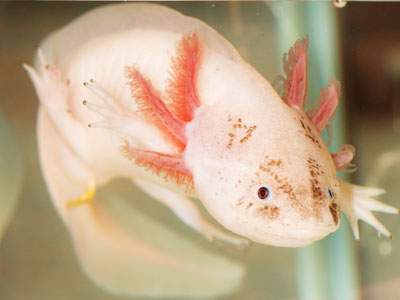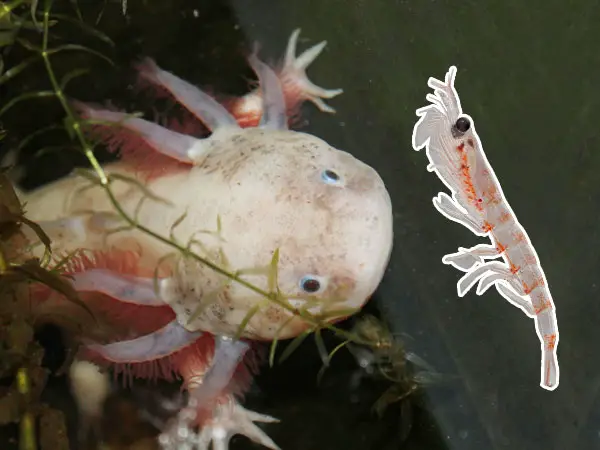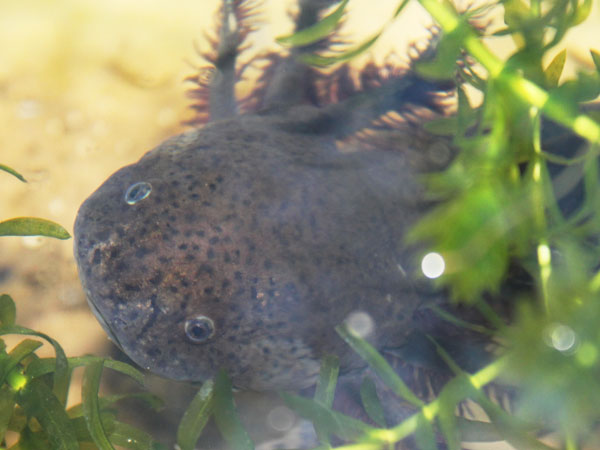
You may have heard that axolotls breathe in various ways including through their lungs. Indeed, axolotls are complex animals that although develop lungs, remain aquatic for their entire lives unlike other salamanders.
Axolotls require oxygen just as any other aquatic creatures and they have developed a few interesting systems to oxygenate their blood.
In this article, I’m going to discuss the ways axolotls breathe, detailing each method they use and what you should know about the axolotl respiratory system.
The following are the four breathing methods used by axolotls:
- Breathing through skin (common to all salamanders)
- Breathing through gills
- Buccal respiration
- Breathing through lungs
Let’s see what each type of breeding covers, which are the more dominant ones, and most importantly: Can axolotls really breathe through their lungs as well?
Axolotl Breathing Through Skin
Axolotls have a thin and moist skin that allows gas to quickly diffuse into the blood vessels that are closest to the skin and transported through the blood to cells. This diffusion happens quickly and efficiently.
Because gasses are quickly taken away, a lower concentration of oxygen and a higher concentration of carbon dioxide can be observed in the blood closest to the skin, which is also explained by the fact that carbon dioxide is expelled through the skin.
The slimy coating that you see on axolotls has a crucial role in this process, because it aids in the gas exchange.
This breathing mechanism is not unique to the axolotls, in fact, all salamanders can breathe through their skin, but unlike other salamanders that metamorphose and can breathe on land as well, axolotls don’t have this ability.
Axolotl Breathing Through Gills
The iconic feathery gills that decorate the heads of axolotls have well-defined roles in the way axolotls oxygenate their blood and aren’t just purely ornamental.
The feathers that decorate the gills also have a role — to increase the surface area and allow a larger volume of gas to be diffused into the blood.
The feathery gills also make sure that impurities like parasites and other impurities are kept away from the blood.
Buccal Respiration
Buccal respiration is carried out through the Buccopharyngeal membrane and it’s similar to how cutaneous respiration works. The membrane is located at the back of the throat of the axolotl and when it’s pulsates, oxygenated water passes through reaching the gill filaments as well.
Axolotl Breathing Through Lungs
Another way axolotls breathe is through their rudimentary lungs. Of all the breathing methods, breathing through lungs is the least efficient in terms of the volume of oxygen that’s received.
Axolotls really only use their lungs to breathe when oxygen in the water is too low. The lungs of axolotls are simple and sac-like.
The folded pockets encircled by blood vessels and the thin membrane of the sac allow oxygen to get into the bloodstream through capillaries that surround the lungs and veins which take oxygen to the heart.
If the other breathing methods are not immediately apparent, you can actually observe an axolotl breathing through its lungs because you’ll see it swimming to the surface to swallow air bubbles.
Axolotls may do this out of necessity when there isn’t enough dissolved oxygen in the water, but they may also do it out of playfulness. In doing so, they take a small gulp of air and use it to float around in their aquarium.
If you see your axolotl swimming to the tank surface and gulping for air too often, you will want to check your water parameters because your lotl may be struggling for air because of bad water parameters.
Water Quality & Oxygenation Tips
Because axolotls oxygenate their blood through their skin, the type of water you use in the aquarium is important to keep them healthy.
If you’re using tap water in your axolotl tank or for water changes, you should pay attention to remove chlorine and/or chloramine from tap water.
Chlorine can dissipate from water if it’s left to aerate for 24 hours, but chloramine is much harder to remove, and you’ll need special water conditioners to do that.
Making sure your water is well oxygenated is also important. You can achieve better water oxygenation by adding live plants to the water or adding gentle air stones.
An aquarium filter can also create surface agitation and drive more oxygen into the water as well as performing regular water changes.
Being mindful of things like not overfeeding your axolotl, scooping out uneaten food from the aquarium, and carrying out regular water changes along with monitoring water parameters will aid greatly in keeping your axolotls healthy.
Among water parameters, temperature is also important as extremes and temperature fluctuations aren’t tolerated by axolotls. In any event, colder water is always preferable to warmer water, which has a lower oxygen concentration and can induce hyperthermia in axolotls.
Another important element of maintaining good tank conditions is having a large enough aquarium suitable for axolotls. I recommend a 20-gallon tank that’s equipped with an aquarium hood of lid to prevent your axolotl from jumping out of the aquarium.
Conclusion
As you can see, axolotls have a few ways in which they breathe and drive oxygen to the cells that need it.
Although axolotls have lungs, breathing through their lungs is not the norm for them. Their lungs aren’t well developed, and they can only take small gulps of air and rely on this breathing method usually only when oxygen in the water is too low for breathing through skin or gills.
Therefore, breathing through their skin and gills are the default methods used by axolotls, while breathing through their lungs is a sort of “back-up” mechanism, if your will.
Because their skin is so thin that it allows the quick dispersion of oxygen, it’s important to keep their water clean and their water parameters within their preferred range.
If you notice your axolotl swimming to the surface and swallowing air bubbles every now and then, it’s perfectly normal. However, if they’re doing it too often, make sure to check your water parameters.




